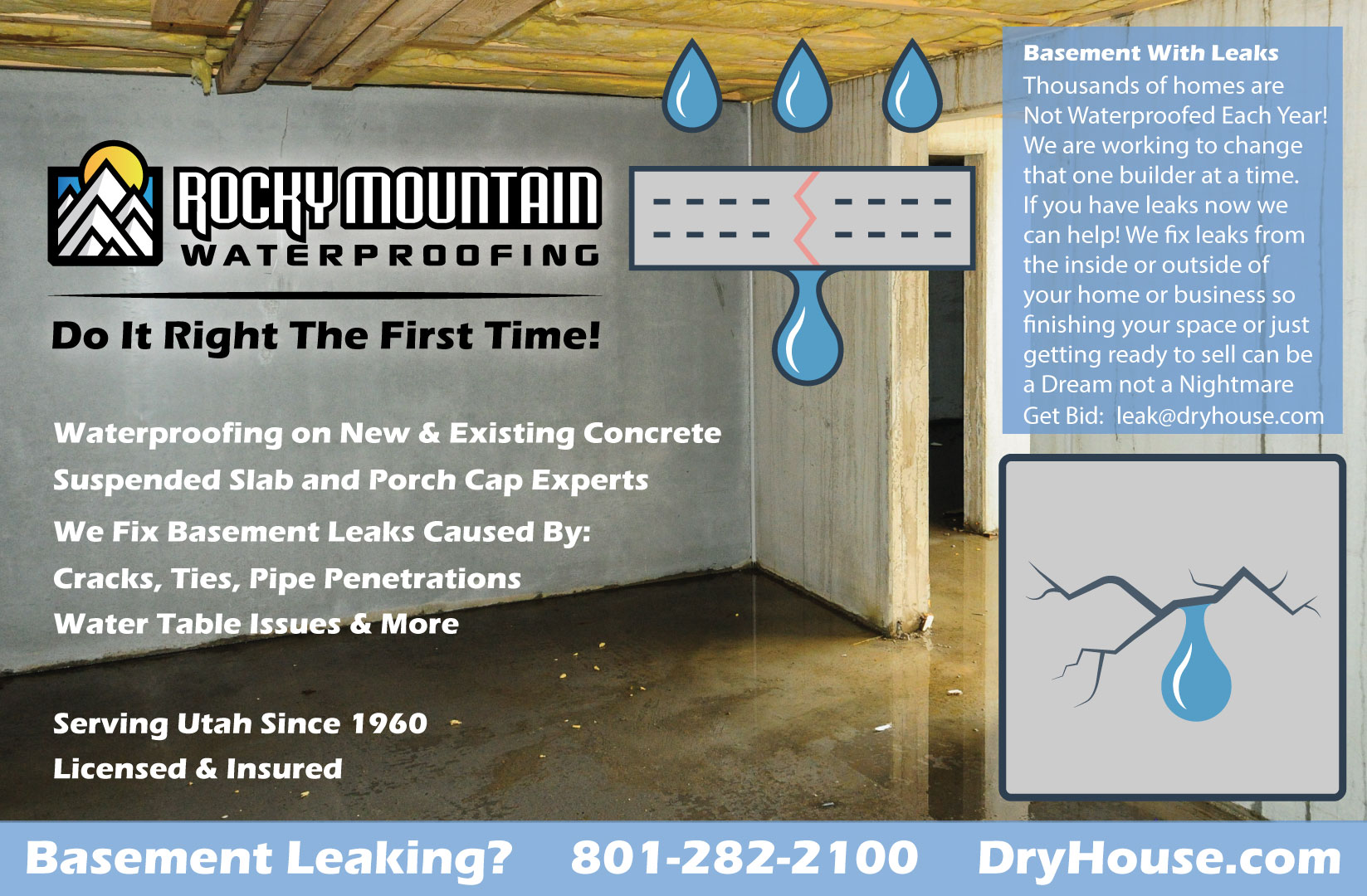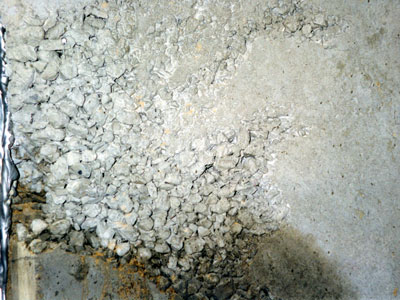In Business Since 1960
Rocky Mountain Waterproofing has been in business since 1960! That means that we will be there to make sure your Home or Business is Waterproof Today and long into the Future. Learn more about our Journey as a Company.
Licensed And Insured
We are fully Licensed and Insured. We are Licensed Contractors and continue to maintain all the necessary certifications required in Utah and surrounding areas. We are also a Licensed Pesticide Company for Termite Pre-Treatment on New Construction.
Do It Right The First Time
We believe in Doing the job right the first time. This has been our motto for many years. Because of this we offer many options for Waterproofing that can meet even the most demanding need. To learn more about the Difference between Damp Proofing and Waterproofing -- Click Here --
Energy Efficient Options
We have options to help make your project more energy efficient. From standard foam Insulation to innovative products that provide insulation, protection, and drainage to keep your project warm and dry long into the future. All This while eliminating costly callbacks due to leaks.
General
Sprinklers info...
Landscaping Info...

Many homes leak, in fact, 85% of most common issues with buildings come from water intrusion. Here are a few of the most common leaks we have identified over the years to better help you diagnose what is happening with your project and how to get it back on track.
- Cracks under windows
- Honeycomb in concrete
- Foundation Ties
- Floor Joint leak
- Pipe Pentrations
- Improper flashing
- Structural Cracks
Cracks under Windows
These form due to the added stress of the building where a window opening has been formed, or saw cut into a basement. But you need not settle and think fixing from the outside is your only choice. Being the most common leak area, urethane injection from inside can save on cost and time it takes to return back to original state. Click on the link to see more about urethane injection and how it can help you.

Honeycomb in concrete
Not all concrete can be poured perfectly, and sometimes it is missed during damp proofing/waterproofing applications. Honeycomb can act like a pathway directly into your wall and allow water to enter. It can be fixed from the inside with urethane injection and will be permanently sealed so long as treated completely. See why honeycomb occurs and see if we can help stop your leak.
Foundation Ties
In order to form concrete, form ties are placed to hold wood or metal forms while concrete is poured into the channels and cured. The forms are then removed but the ties remain since they are poured into the concrete wall. Typically these ties are broken and patched on the exterior of the structure, but they can still be a point of water entry if not treated properly. Clink on the link to find out more about form ties and how to best seal against water for your project.
Footing Joint Leak
When water enters the ground, it may become trapped within the layers of soil and create a water table. This water (by the force of gravity) tries to find the path of least resistance to a lower surface. Water, if not properly managed around or under the building can demonstrate itself at the floor to wall joint. Even though this joint is not a leak covered by vertical waterproofing, it can be treated and the interior space can be finished with confidence. Read more on the following link
Pipe Penetrations
Ever structure requires at least one penetration for the water main line to give access for the owner for shutoff. If not treated properly, this is the second most common leak below grade and will destroy finishes in surrounding areas quickly due to its larger opening size (in comparison to other leak entry points) and the fact that it is the point at which water enters the home (culinary water). Read more to find out if this is a leak we can fix with this link.
Improper Flashing
Flashing, whether of metal or other water resistant material, is very effective in shedding water away from the building. But if installed improperly, it can actually route water toward the structure and cause issues to the framing or interior finishes. A standard rule of thumb is to start low and end high, to allow for a "shingling" or overlapping effect to keep water from entering between transitions of products. Read more on the following link to see where this may occur and how to protect against common mistakes.
Structural Cracks
One of the least common, but most critical problems that a building can have. Structural cracks form from extreme stress, or at times impact from machinery such as a backhoe hitting the wall while backfilling the basement. An engineer can diagnose if a crack is structural, but commonly they are over 1/4" wide and run the entire height or width of the wall depending on what is causing the failure and the stress from the building above on that wall. To learn more on how this can be fixed, click on this link to our manufacturer's website
Gutter and Downspout Info...
ICF Foundations are very difficult to waterproof because they have so many seams to address. They are also very prone to have honeycombing throughout the wall.
Ways We Can Repair ICF Foundation Leaks
- Seal the outside of the foundation (Requires foundation be dug up - By others)
- Add a drainage board on outside of foundation (Requires foundation be dug up - By others)
- Remove foam and patch any known leaking areas. (shown in pictures below)
- Remove foam and coat walls with Aquafin - (more info on Aquafin)
- Interier Drainage System - (We don't provide this option but we can refer someone who can)
Please contact us for more information on the avalable options.
Information About The Images Below Of An ICF Foundation Leak Repair
- This foundation was not sealed on the outside and had a large amount of honeycomb.
- We filled the honeycomb with a hydraulic cement.
- Ports were added with Epoxy to allow for injection of Urethane.
- The small plastic ports were used to inject the Urethane foam into the foundation.
- The foam running down the wall is the urethane expanding.
- A water test should be done to verify that all problem areas have been addressed.

Got Foundation Leaks?
We can fix them! Even Active Leaks. Inside or Out. Cracks, Ties, Honeycomb, Etc.
Houzz Reviews








